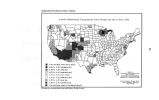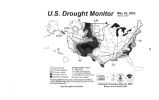| OCR Text |
Show 63 Utah water there by exchange, but there is a potential that Deer Creek Reservoir is right down into a dead pool and that's going to be a very difficult situation with regard to hoping to get water this winter. Mr. MATHESON. Thanks for your patience, Mr. Chairman. I will yield back. Mr. CANNON. MS. Woolsey, do you have any questions? Ms. WOOLSEY. Yes, I do. Mr. Bowler, while you are there on that microphone- I would like to ask you a couple of questions also of Mr. Ovard and Dr. Hayes. USE OF TERTIARY WATER First of all, I represent the dairy industry that provides 45 percent of the dairy products in the Bay area but these are family, small family farms, 500 cattle would be a lot on any one of those three or four generation farms. And I represent the grape industry that is Sonoma County, the best wine in the world. Okay? We use tertiary water. Are you moving into that arena at all? Are you thinking about it? We don't use it everywhere but I mean we have, you know, the highest end wines in the Nation and in the world, and we use it. Those farmers want tertiary, it is treated water. Mr. OVARD. I think it certainly makes a lot of sense. There's two barriers. Number 1 is perception. Unfortunately, the treatment plants are generally at the low end of the system and so that involves pumping water up to the head of your water district. It is not a popular concept. The main issue we have to deal with is cost and I think the day is coming when it will be viable to use that water economically but right now you are talking about retrofitting congested streets, and trying to get a secondary water system through those with all the utilities in them and pump it up to elevation so you have the dual system. That final treatment cost scenario, we estimate that probably the waste water effluent, to treat that to municipal standards is still at least double. Of course, some of the water right now, this indicates it is being used on a limited basis in golf courses and some roadways on the green strips along. Ms. WOOLSEY. Tertiary or secondary? Mr. OVARD. We call it secondary irrigation system. It would be tertiary water. Ms. WOOLSEY. When you refer to cost, one of the best conservation controls is rates. Ours are very high, even though we have rain but not always. What is your rate structure? Mr. OVARD. There are some communities in Utah that have very high rates. Typically water rates in Utah have been maybe half the national average and I expect that over the next 20 years that we will certainly be joining the national averages in that the cost of water projects that we have on our drawing boards is about double the cost of the Central Utah Water Users, which is kind of our benchmark. Ms. WOOLSEY. Thank you. Dr. Hayes, somebody asked me just yesterday what was the most interesting trip I have had as a 10- year member of the House of Representatives and my answer, without blinking an eye, was the South Pole, Antarctica, where the science for global warming is being carried out. Have you ever been there? |


























































































